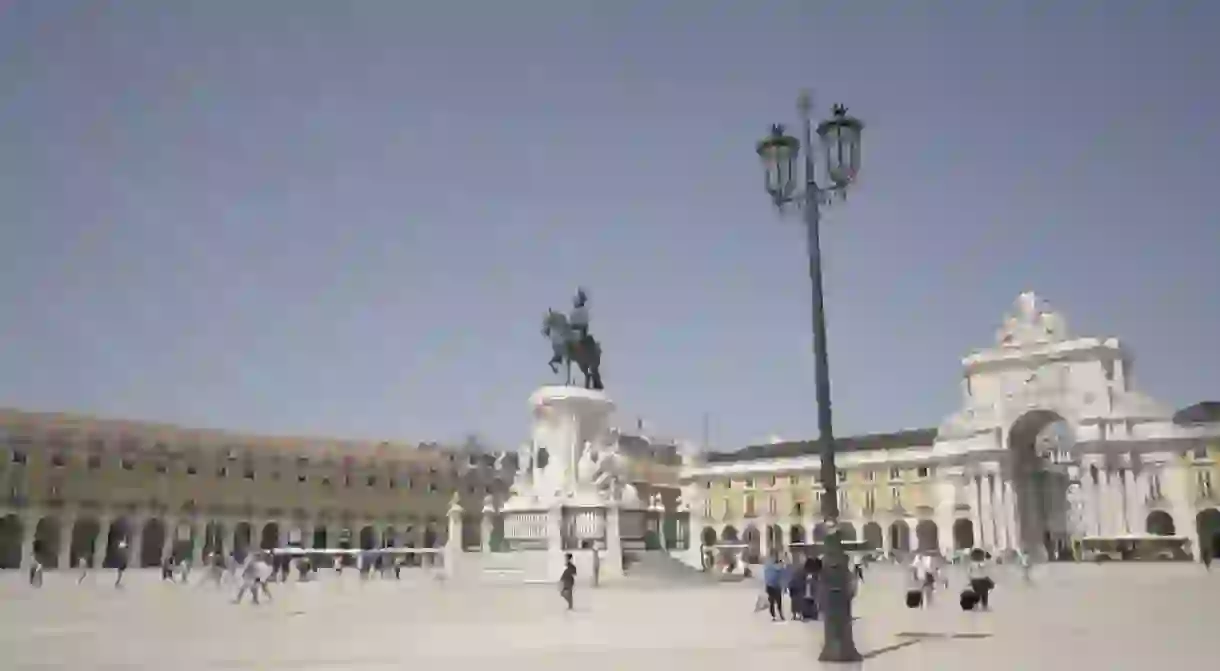Postcard from Lisbon's Arco Triunfal da Rua Augusta

Perhaps the very first place first-time visitors should see when arriving in Lisbon is the bright Commerce Square, a lovely open space facing the Tagus River. Known in Portuguese as Praça do Comércio and Terreiro do Paço, it is the largest and most recognizable square, not only for the surrounding yellow buildings but also the massive Arco Triunfal da Rua Augusta.
This historical archway is aptly named for its location at the end of the restaurant and shop-filled Rua Augusta. Built in the 19th century it was inaugurated in 1875 in memory of Lisbon’s reconstruction after the Great Earthquake of 1755, which destroyed the entire Baixa neighborhood.
Tourists are aware of the tables by the archway, usually filled with souvenir-style knickknacks, jewelry, and other items, but the real attention-grabber is in the architecture and the viewing area from the top, which only costs €2.50 to enter. Six supportive columns (some as tall as 11 meters) surround the central opening and statues were strategically placed above them. Among the statues are representations of navigator Vasco da Gama (the first explorer to reach India by sea), political leader Marquis de Pombal (who played a crucial role in Lisbon’s recovery after the Great Earthquake), and historically important military generals.
From the square looking up, the archway’s massive center is another curious space. Designed into the center is Portugal’s coat of arms and sitting at the top are three magnificent statues representing Glory bestowing crowns over Genius and Valor, which were created by French sculptor Célestin Anatole Calmels.
Although it became an archway, the monument was initially meant to be a bell tower and visitors can take an elevator up to the room where the original bell can be viewed. Reaching the 360 views around Lisbon require a narrow climb up a spiral staircase to the top.
One of the easiest ways to reach the Arco Triunfal da Rua Augusta is by taking the metro to the Terreiro do Paço metro stop on the blue line. Many of the main city buses and trams, like the tram 28, also stop by this historic landmark.













